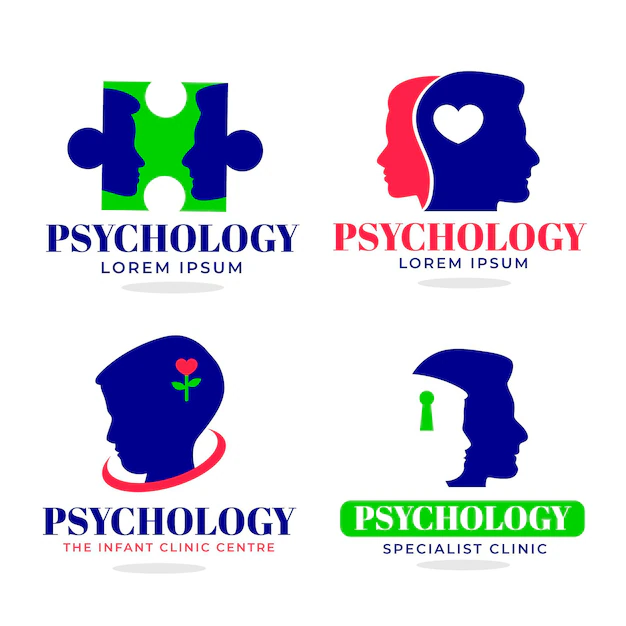How to Support Your Child with Dyslexia at Home: 8 Key Strategies and Tips for Parents

Introduction: Dyslexia is a common learning disorder that affects a child’s ability to read, write, and spell despite normal intelligence and adequate instruction. While dyslexia presents challenges, early intervention and support can significantly improve a child’s reading skills and academic success. As a parent, you play a crucial role in helping your child with dyslexia thrive. In this article, we’ll explore practical strategies and tips for supporting your child with dyslexia in the comfort of your home.

Page Contents
- 1 How to Support Your Child with Dyslexia at Home: Strategies and Tips for Parents
- 2 Understanding Dyslexia:
- 3 8 Key Strategies for Supporting Your Child with Dyslexia at Home:
- 4 Here are some common symptoms of dyslexia:
- 5 Dyslexia Conditions
- 6 Here are seven healthy foods that can be beneficial for individuals with dyslexia:
- 7 Conclusion:
How to Support Your Child with Dyslexia at Home: Strategies and Tips for Parents

Understanding Dyslexia:
Dyslexia is a specific learning disability characterized by difficulties with accurate and fluent word recognition and by poor spelling and decoding abilities.
It affects the areas of the brain that process language, making it challenging for individuals with dyslexia to read and comprehend written text. Common signs of dyslexia include difficulty with phonological awareness (identifying and manipulating sounds in words), decoding words, spelling, and reading fluency.
8 Key Strategies for Supporting Your Child with Dyslexia at Home:
- Create a Dyslexia-Friendly Environment:
- Designate a quiet and organized study area free from distractions.
- Use multisensory learning materials, such as audiobooks, tactile letter cards, and interactive apps, to engage your child’s senses during learning activities.
- Provide ample natural light and comfortable seating to enhance focus and concentration.
- Encourage Reading for Pleasure:
- Foster a love of reading by offering a variety of reading materials tailored to your child’s interests and reading level.
- Set aside dedicated time for reading together as a family and model positive reading behaviors.
- Celebrate your child’s reading achievements and progress, no matter how small, to boost confidence and motivation.
- Practice Phonics and Decoding Skills:
- Use systematic phonics instruction to teach your child the relationship between letters and sounds.
- Break words down into individual phonemes (sounds) and practice blending them together to form words.
- Use multisensory techniques, such as tracing letters in sand or shaving cream, to reinforce letter-sound associations.
- Provide Supportive Technology:
- Explore assistive technology tools, such as text-to-speech software, speech-to-text apps, and dyslexia-friendly fonts, to facilitate reading and writing tasks.
- Encourage your child to use audiobooks or screen readers to access written material independently.
- Build Vocabulary and Comprehension Skills:
- Engage in meaningful conversations with your child to build vocabulary and improve comprehension.
- Encourage your child to ask questions, make predictions, and summarize key points when reading or discussing texts.
- Scaffold reading comprehension by providing visual aids, graphic organizers, and prompts to help your child organize and retain information.
- Foster a Growth Mindset:
- Emphasize effort, persistence, and resilience over perfection.
- Encourage your child to embrace challenges and view mistakes as opportunities for learning and growth.
- Praise your child’s hard work and progress, and provide specific feedback to reinforce positive behaviors.
- Celebrate Progress and Effort:
- Recognize and celebrate your child’s achievements, no matter how small. Focus on effort and progress rather than perfection, and provide specific, positive feedback to reinforce their hard work.
- Seek Professional Support:
- Consult with educators, learning specialists, and healthcare professionals who have experience working with children with dyslexia. They can provide additional guidance, resources, and support tailored to your child’s individual needs.
Here are some common symptoms of dyslexia:
- Difficulty with Reading:
- Slow and laborious reading, often characterized by frequent pauses and hesitations.
- Difficulty recognizing and decoding words accurately, particularly unfamiliar or irregular words.
- Reversals of letters, numbers, or words (e.g., confusing ‘b’ and ‘d’, ‘was’ and ‘saw’).
- Poor Spelling:
- Difficulty with spelling words correctly, often relying on phonetic spelling or guessing.
- Inconsistent spelling patterns, with frequent mistakes in spelling even familiar words.
- Challenges with Phonological Awareness:
- Difficulty identifying and manipulating the sounds within words (phonemes), such as blending sounds to form words or segmenting words into individual sounds.
- Difficulty with rhyming, recognizing syllables, or identifying the beginning, middle, and end sounds in words.
- Slow and Inaccurate Writing:
- Slow, labored handwriting with irregular letter formation and spacing.
- Difficulty organizing thoughts and expressing ideas coherently in writing.
- Difficulty with Sequencing and Organization:
- Difficulty remembering and following sequences of instructions or steps in tasks.
- Challenges with organizing thoughts or materials, leading to messy desks, backpacks, or workspaces.
- Poor Reading Comprehension:
- Difficulty understanding and remembering what is read, particularly complex or lengthy passages.
- Limited ability to infer meaning from context or make connections between ideas in text.
- Avoidance of Reading or Writing Activities:
- Reluctance to engage in reading or writing activities, often due to frustration, embarrassment, or anxiety about making mistakes.
- Inconsistent Performance:
- Inconsistencies in academic performance, with strengths in some areas (e.g., oral language, creativity) and weaknesses in others (e.g., reading, spelling).
- Wide variability in performance from day to day or task to task.
- Difficulty with Time Management and Organization:
- Challenges with managing time effectively and completing tasks within allotted timeframes.
- Difficulty keeping track of assignments, deadlines, or schedules.
- Low Self-Esteem and Frustration:
- Feelings of frustration, anxiety, or low self-esteem related to academic challenges and struggles with reading and writing.
- Negative attitudes towards school or learning activities, avoidance of academic tasks, or behavioral issues in response to academic stress.
It’s important to note that not all individuals with dyslexia will exhibit all of these symptoms, and symptoms can vary in severity from person to person. Additionally, dyslexia is a specific learning disability that is distinct from other factors that may affect reading and writing skills, such as visual or auditory impairments, intellectual disabilities, or environmental factors. If you suspect that your child may have dyslexia or are concerned about their reading and writing skills, it’s important to seek a comprehensive evaluation by a qualified professional, such as an educational psychologist or neuropsychologist, for an accurate diagnosis and appropriate support.
Dyslexia Conditions
Not typically classified as a neurodevelopmental disorder but can co-occur with ADHD
Dyslexia is primarily considered a specific learning disability that affects reading, writing, and spelling skills despite normal intelligence and adequate instruction. While dyslexia primarily involves difficulties with language processing and literacy skills, it is not typically classified as a neurodevelopmental disorder or motor development disorder.
However, dyslexia can co-occur with other neurodevelopmental conditions, such as attention-deficit/hyperactivity disorder (ADHD), specific language impairment (SLI), and developmental coordination disorder (DCD), which may impact motor development. Research has shown that individuals with dyslexia may have higher rates of comorbidities with these conditions compared to the general population.
Additionally, dyslexia may share some underlying neurobiological factors with other neurodevelopmental disorders, such as differences in brain structure and function related to language processing and executive functioning. However, the specific neurobiological mechanisms underlying dyslexia may differ from those associated with other disorders.
It’s important to recognize that dyslexia is a distinct condition with its own set of characteristics and challenges, but it can coexist with other developmental disorders, and individuals with dyslexia may benefit from comprehensive assessment and intervention to address their unique needs across multiple domains of development. Collaborative care involving educators, psychologists, speech-language pathologists, and other professionals can help provide tailored support for individuals with dyslexia and comorbid conditions, addressing their academic, social, emotional, and motor development needs comprehensively.

Here are seven healthy foods that can be beneficial for individuals with dyslexia:
- Fatty Fish (e.g., Salmon, Mackerel, Sardines):
- Fatty fish are rich in omega-3 fatty acids, particularly EPA and DHA, which are important for brain health and cognitive function. Omega-3 fatty acids have been shown to support learning and memory, making them beneficial for individuals with dyslexia.
- Berries (e.g., Blueberries, Strawberries, Raspberries, Kiwi, Java plum duhat):
- Berries are packed with antioxidants, including flavonoids and anthocyanins, which have been linked to improved cognitive function and brain health. Including berries in the diet may help support overall brain function and mitigate some symptoms of dyslexia.
- Leafy Greens (e.g., Spinach, Kale, Swiss Chard):
- Leafy greens are rich in vitamins, minerals, and antioxidants that support overall brain health and cognitive function. They are particularly high in folate, which is important for neurotransmitter synthesis and cognitive development.
- Nuts and Seeds (e.g., Walnuts, Flaxseeds, Chia Seeds):
- Nuts and seeds are excellent sources of healthy fats, protein, vitamins, and minerals that support brain health. They contain omega-3 fatty acids, antioxidants, and other nutrients that may help improve cognitive function and learning abilities.
- Whole Grains (e.g., Oats, Quinoa, Brown Rice):
- Whole grains provide complex carbohydrates, fiber, vitamins, and minerals that support overall health and sustained energy levels. Choosing whole grains over refined grains can help stabilize blood sugar levels and provide a steady source of energy for optimal brain function.
- Eggs:
- Eggs are nutrient-dense and provide high-quality protein, vitamins (including choline and B vitamins), and minerals (such as zinc and iron) that support brain health and cognitive function. Choline, in particular, is important for neurotransmitter synthesis and memory formation.
- Greek Yogurt:
- Greek yogurt is a good source of protein, calcium, and probiotics that support overall health and digestive function. Probiotics may also have a beneficial effect on brain health and cognitive function by promoting a healthy gut microbiome.
Incorporating these nutrient-rich foods into a balanced diet can help support brain health and cognitive function in individuals with dyslexia. It’s important to focus on a varied and balanced diet that includes a wide range of nutrient-dense foods to provide the essential nutrients needed for optimal brain function and overall well-being.
Conclusion:
Supporting a child with dyslexia at home requires patience, understanding, and a collaborative approach between parents, educators, and healthcare professionals. By creating a dyslexia-friendly environment, incorporating multisensory learning techniques, and fostering a growth mindset, you can empower your child to overcome challenges and reach their full potential. Remember that every child with dyslexia is unique, and it’s essential to tailor support strategies to meet your child’s individual needs and strengths. With love, support, and effective intervention, children with dyslexia can thrive academically and achieve success in all areas of life.






